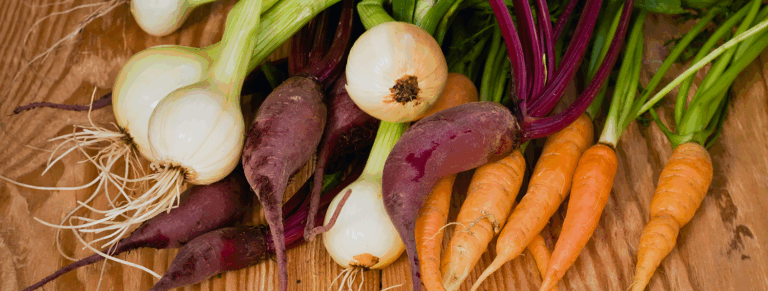Barley Grass for Inflammatory Balance
Many people are familiar with barley, an important cereal crop grown around the world. But many may not be as familiar with barley grass. Barley grasses, also known as barley greens, are the young green leaves and stems of the barley plant after about 10 days of sprouting.1 This edible grass is popular in many parts of the world, where they are dried, ground into a powder, and mixed with water to be enjoyed as a healthy beverage. Since barley grass is rich with nutrients, enzymes and antioxidants, it’s been studied for a wide range of potential health benefits ranging from mood support to chronic disease prevention. While barley is a gluten-containing grain, barley grass is naturally gluten-free, making it a safe and healthy option for people who must or prefer to avoid gluten.
Key Nutrients in Barley Grass
As with other edible sprouts and grasses, barley grass is very high in chlorophyll, enzymes, and phytonutrients, including flavonoids and polyphenols. The flavonoids found in barley grass have been shown to be potent free radical scavengers with the ability to prevent oxidative damage to lipids, including phospholipids, fatty acids, blood plasma, and DNA.2
Chlorophyll, the green pigment in plants, has a wide range of potential health benefits, and barley grass is high in this beneficial phytonutrient. Chlorophyll has antioxidant and anti-inflammatory properties, may be cancer-protective, may improve wound healing, and may support proper red blood cell activities and hemoglobin levels.3 Chlorophyll plus the enzymes found in barley grass pack a powerful combination. Barley grass contains hundreds of enzymes that the body is able to utilize, including superoxide dismutase, catalases, and oxidases. Many of these enzymes act as antioxidants that offer protection from excess inflammation and oxidative stress.1
Barley grass is also a rich source of vitamins and minerals, specifically vitamins A and C, calcium, phosphorus, sulfur, magnesium, and potassium. It’s also a good source of the amino acids tryptophan and gamma-aminobutyric acid (GABA), nutrients that help the body make more calming neurotransmitters, which may promote healthy mood and restorative sleep.1
Potential Benefits of Barley Grass
Inflammatory balance
Chronic inflammation is the unifying root-cause dysfunction common across all chronic disease conditions, as well as a factor in many other diseases and symptoms. Helping to maintain inflammatory balance is a key benefit of phytonutrients, and barley grass is a perfect example. Barley grass is not just high in phytonutrients, but also rich in anti-inflammatory vitamins and minerals, as well as enzymes that promote anti-inflammatory activity in the body.
Chronic disease prevention
Due to its antioxidant and anti-inflammatory properties, consuming barley grass may offer a wide range of potential benefits against chronic diseases, including:
- Cancer: Antioxidants, phytonutrients, flavonoids, and chlorophyll from plant foods like barley grass each offer cancer-protective benefits on their own. In combination with one another, as is the case with barley grass, these components may offer added benefits. Barley grass has been found to inhibit tumor growth by enhancing healthy apoptosis in breast and cancer cell lines, and has been found to inhibit cancer cell proliferation in test tube studies.1, 4
- Cardiovascular disease: Barley grass has been shown to beneficially influence lipid metabolism and reduce lipid peroxidation, which contributes to the formation of atherosclerosis. It may also support healthy function of the vascular endothelium, the inner lining of blood vessels, the function of which is an important marker of cardiovascular health.1 In a small study of smokers with hyperlipidemia, barley grass supplementation for four weeks significantly reduced plasma cholesterol and measures of oxidized cholesterol.5
- Blood pressure: Saponarin, a phytonutrient found in barley grass may help regulate blood pressure and encourage healthy blood flow.1
- Metabolic syndrome: Animal studies have suggested that barley grass may support healthy body weight, lipid profiles and liver function.6 More research is needed to confirm this benefit in people.
Digestion and gut health
Research continues to uncover the ways in which gut health influences overall health. Barley grass has been found to support gut health in a number of ways, including:
- As a source of insoluble fiber, barley grass promotes healthy bowel elimination, a critical component of gut health and detoxification balance. The beta-glucan fiber found in barley grass may also support healthy immune function.1
- Barley grass acts as a prebiotic fiber, feeding beneficial microbes in the digestive tract.1 In fact, barley grass has been found to promote the healthy colonization of bifidobacteria and other healthy types of gut microbes. Researchers found that this healthy shift in gut ecology resulted in increased synthesis of butyrate, a short chain fatty acid critical to gut health, as well as the synthesis other important amino acids.7
While the research on barley greens continues to mount, one thing is clear: this plant has a wide range of potential benefits relevant to many of today’s chronic health issues.
- Zeng Y, Pu X, Yang J, Du J, Yang X, Li X, Li L, Zhou Y, Yang T. Preventive and Therapeutic Role of Functional Ingredients of Barley Grass for Chronic Diseases in Human Beings. Oxid Med Cell Longev. 2018 Apr 4;2018:3232080. doi: 10.1155/2018/3232080. PMID: 29849880; PMCID: PMC5904770.
- Benedet JA, Umeda H, Shibamoto T. Antioxidant activity of flavonoids isolated from young green barley leaves toward biological lipid samples. J Agric Food Chem. 2007 Jul 11;55(14):5499-504. doi: 10.1021/jf070543t. Epub 2007 Jun 1. PMID: 17539660.
- Solymosi K, Mysliwa-Kurdziel B. Chlorophylls and their Derivatives Used in Food Industry and Medicine. Mini Rev Med Chem. 2017;17(13):1194-1222. doi:10.2174/1389557516666161004161411
- Woo SM, Kwon SC, Ko SG, Cho SG. Barley grass extract causes apoptosis of cancer cells by increasing intracellular reactive oxygen species production. Biomed Rep. 2017;6(6):681-685. doi:10.3892/br.2017.897
- Yu, Y., Chang, W., Liu, C. et al. Effect of young barley leaf extract and adlay on plasma lipids and LDL oxidation in hyperlipidemic smokers. Plant Foods Hum Nutr 58, 1–8 (2003).
- Thatiparthi J, Dodoala S, Koganti B, Kvsrg P. Barley grass juice (Hordeum vulgare L.) inhibits obesity and improves lipid profile in high fat diet-induced rat model. J Ethnopharmacol. 2019 Jun 28;238:111843. doi: 10.1016/j.jep.2019.111843. Epub 2019 Apr 3. PMID: 30951844.
- Sasaki D, Sasaki K, Kadowaki Y, Aotsuka Y, Kondo A. Bifidogenic and butyrogenic effects of young barely leaf extract in an in vitro human colonic microbiota model. AMB Express. 2019;9(1):182. Published 2019 Nov 13. doi:10.1186/s13568-019-0911-5







